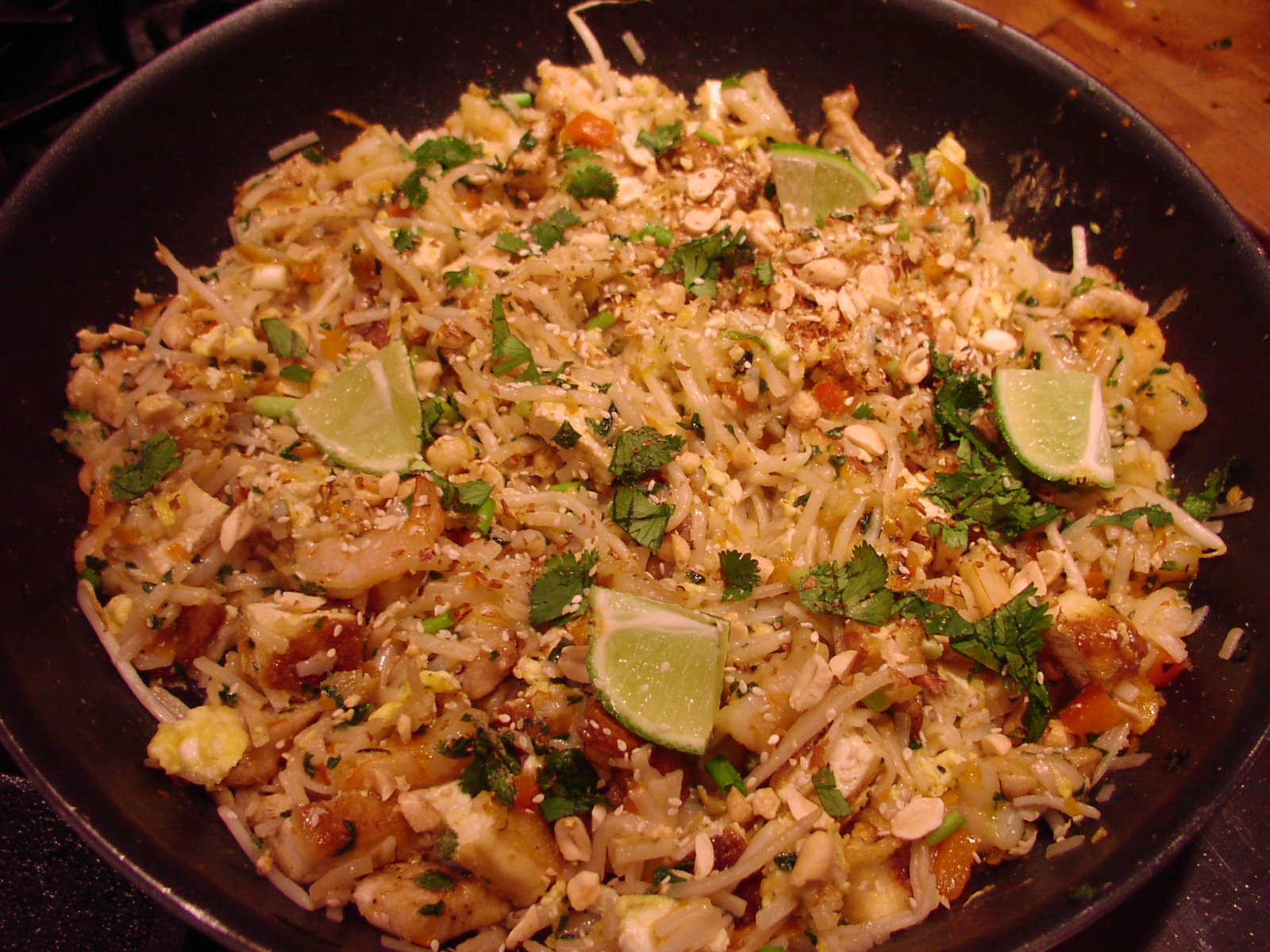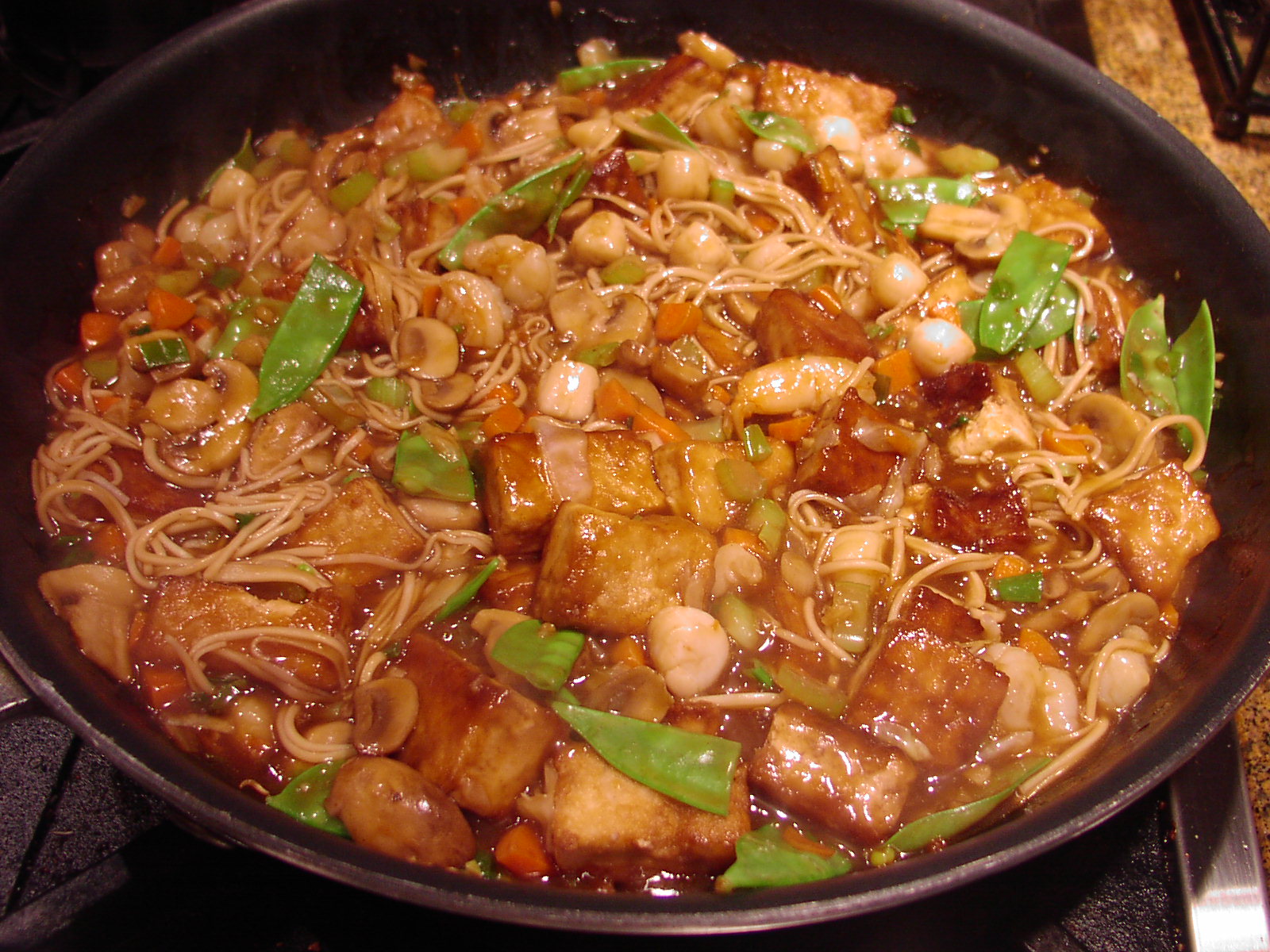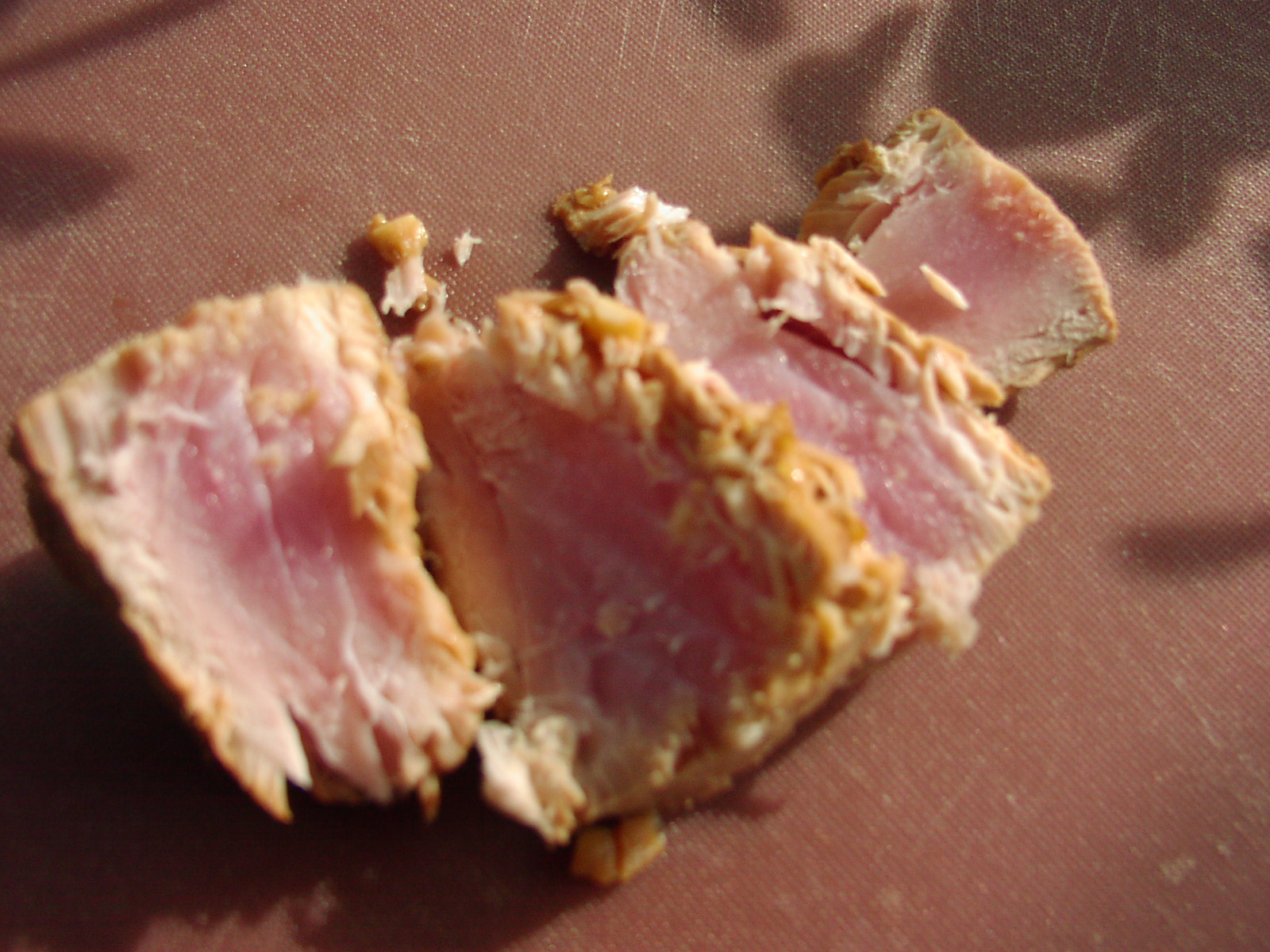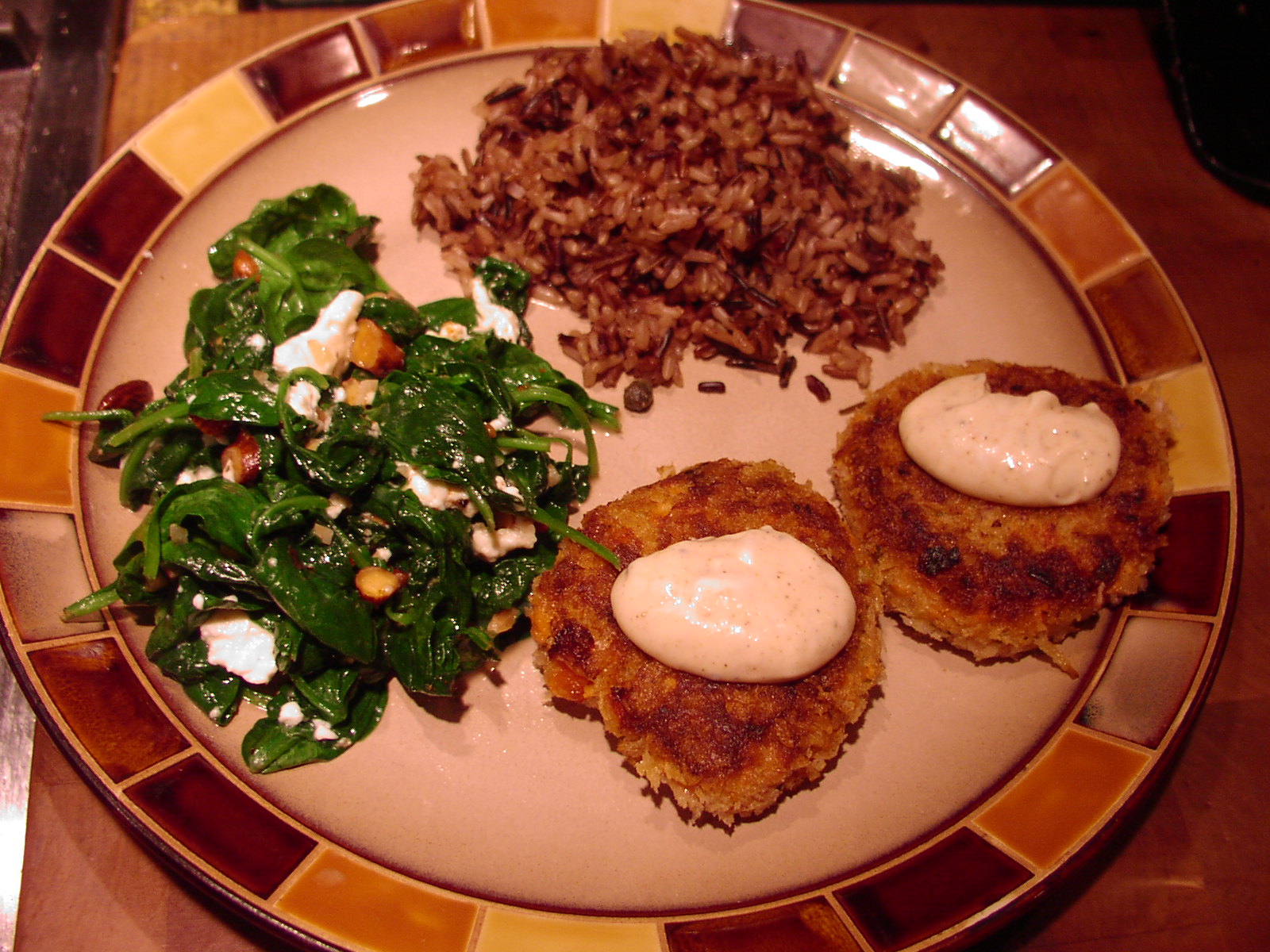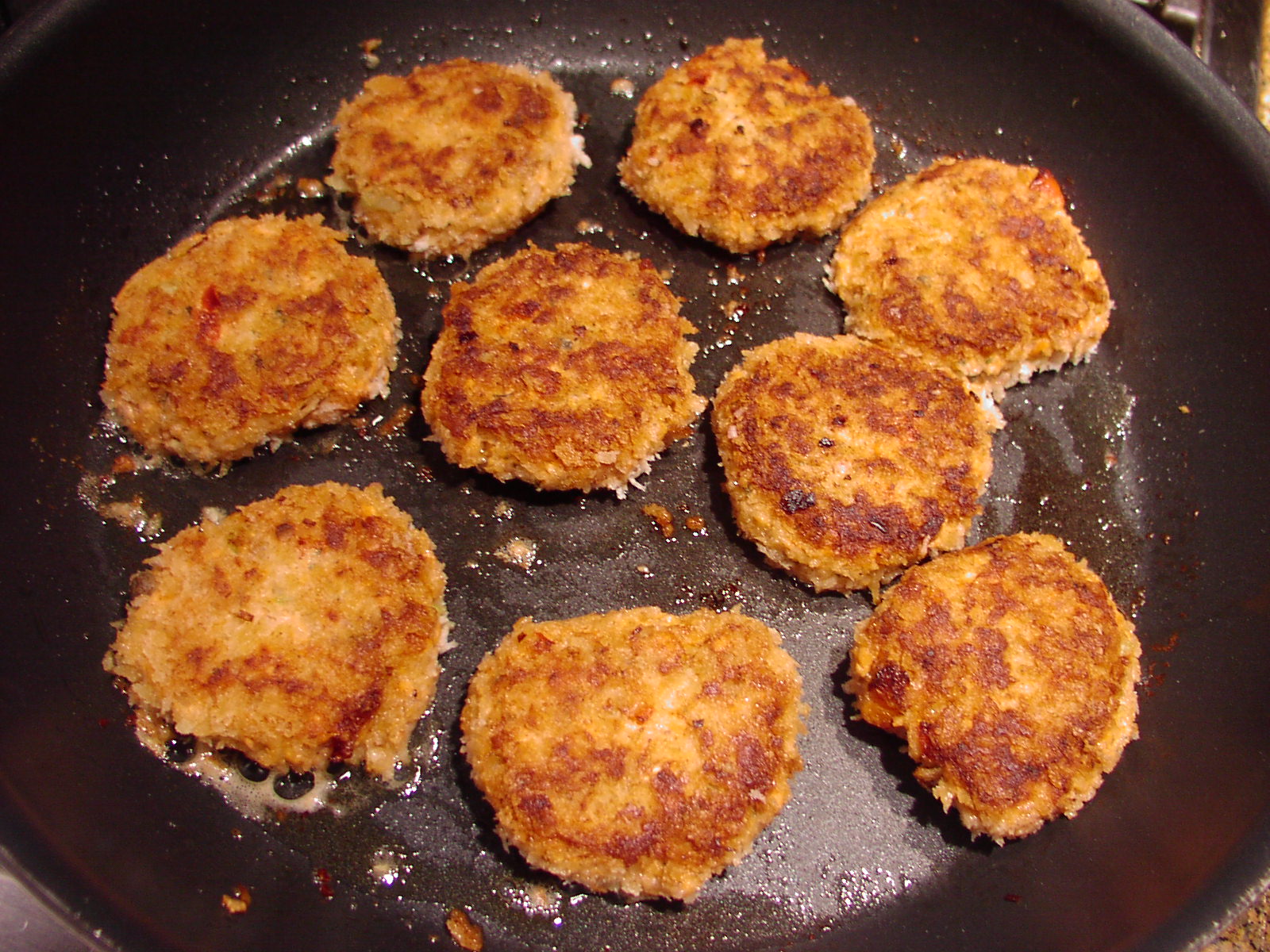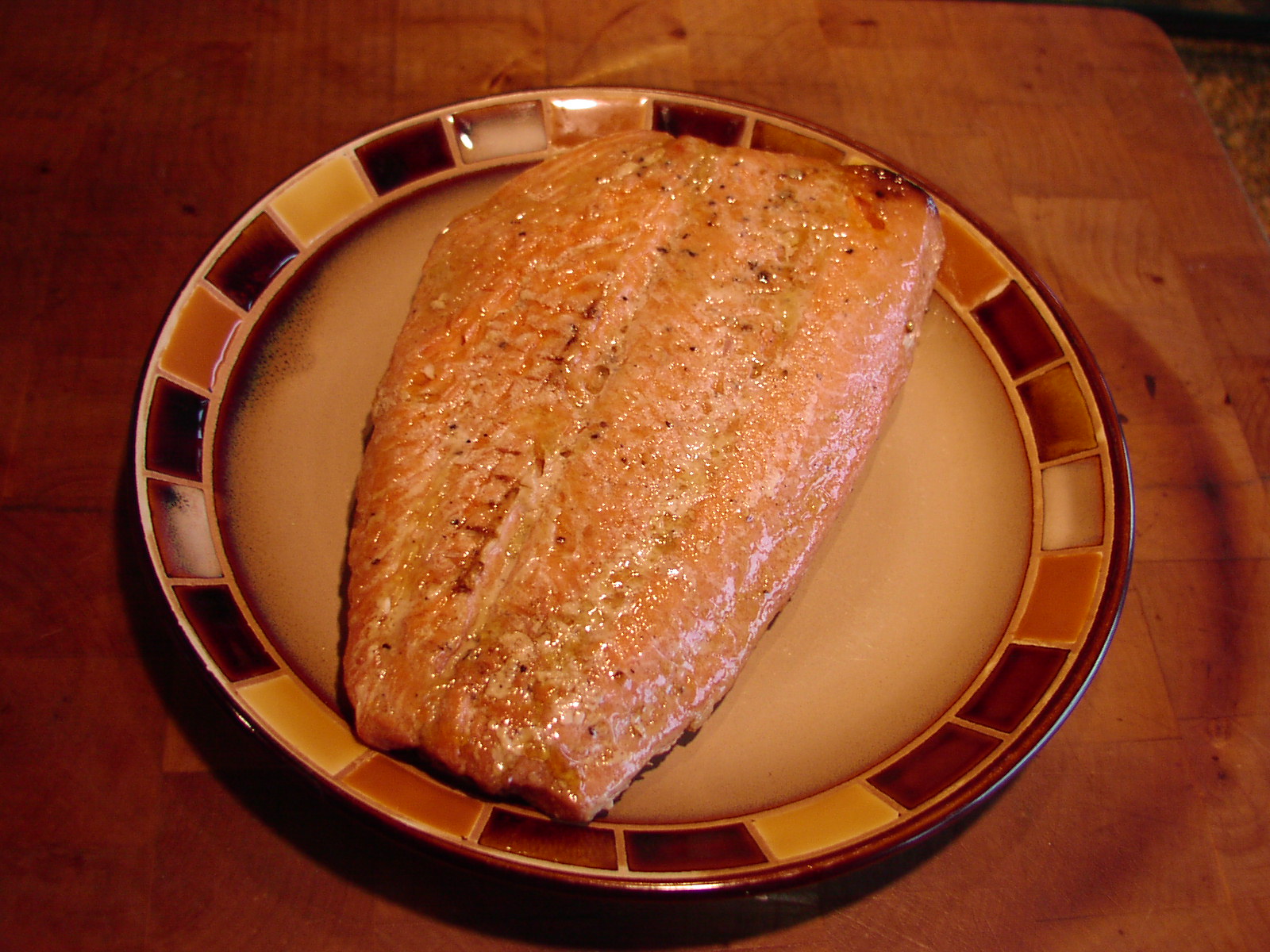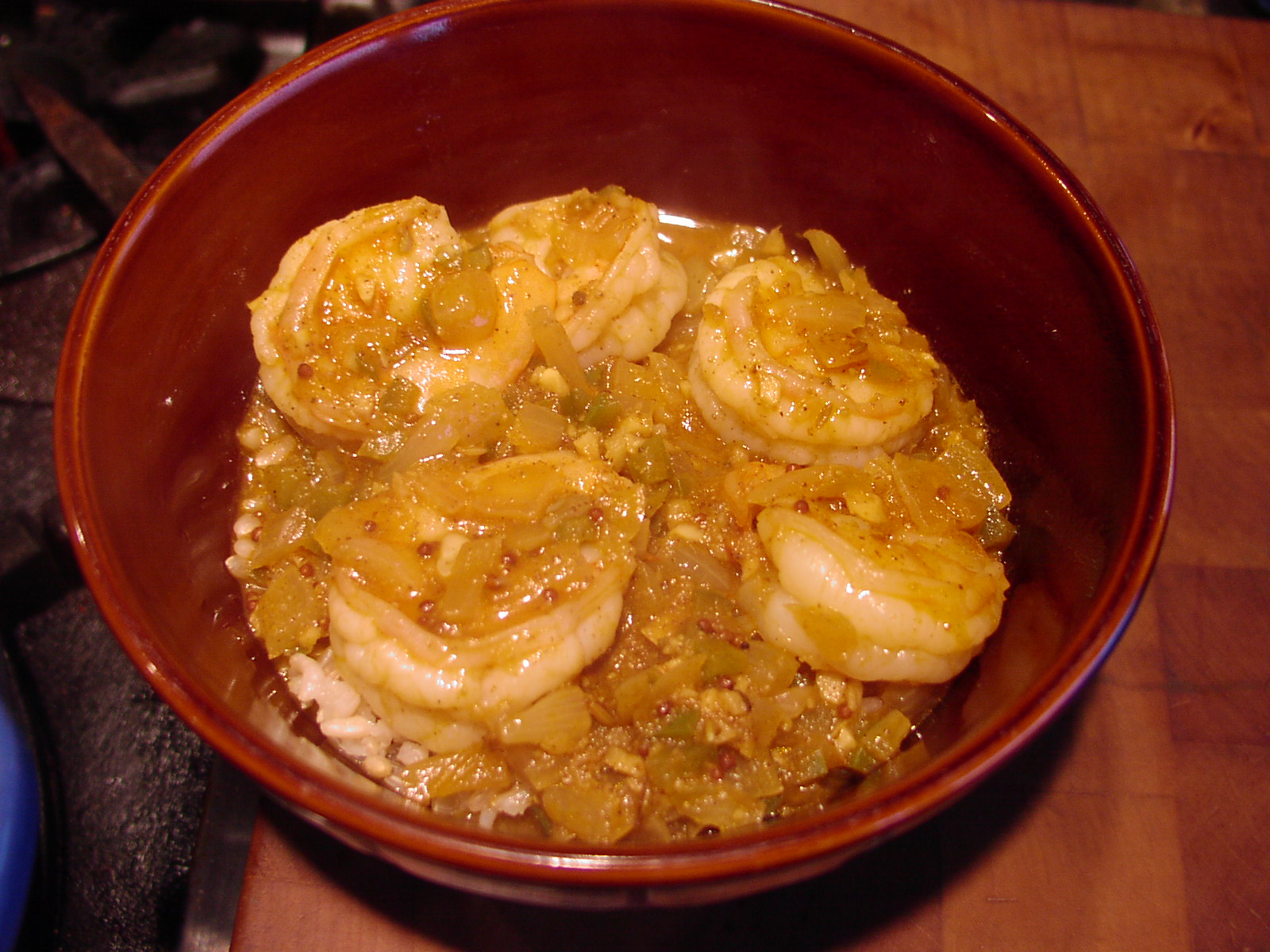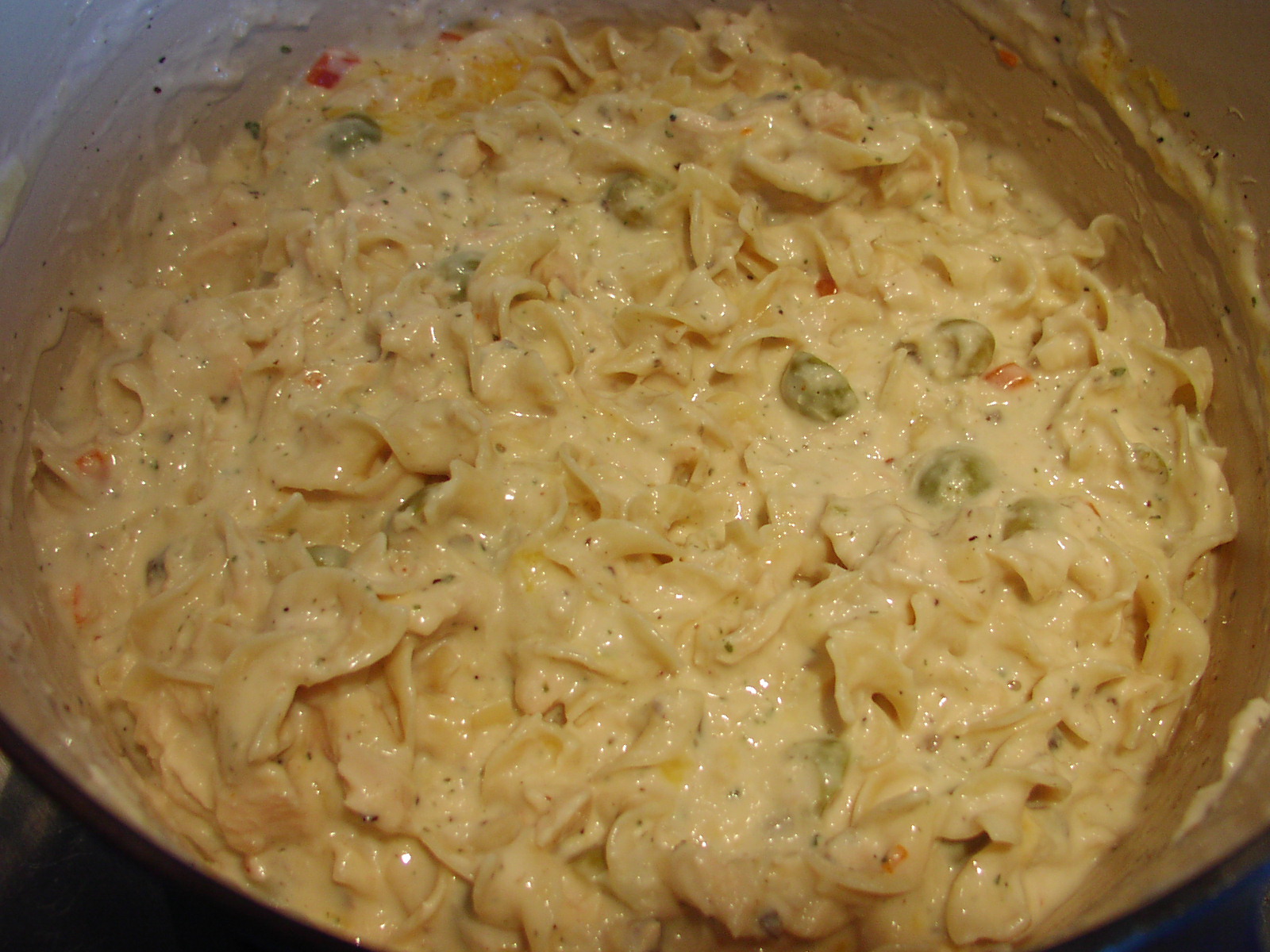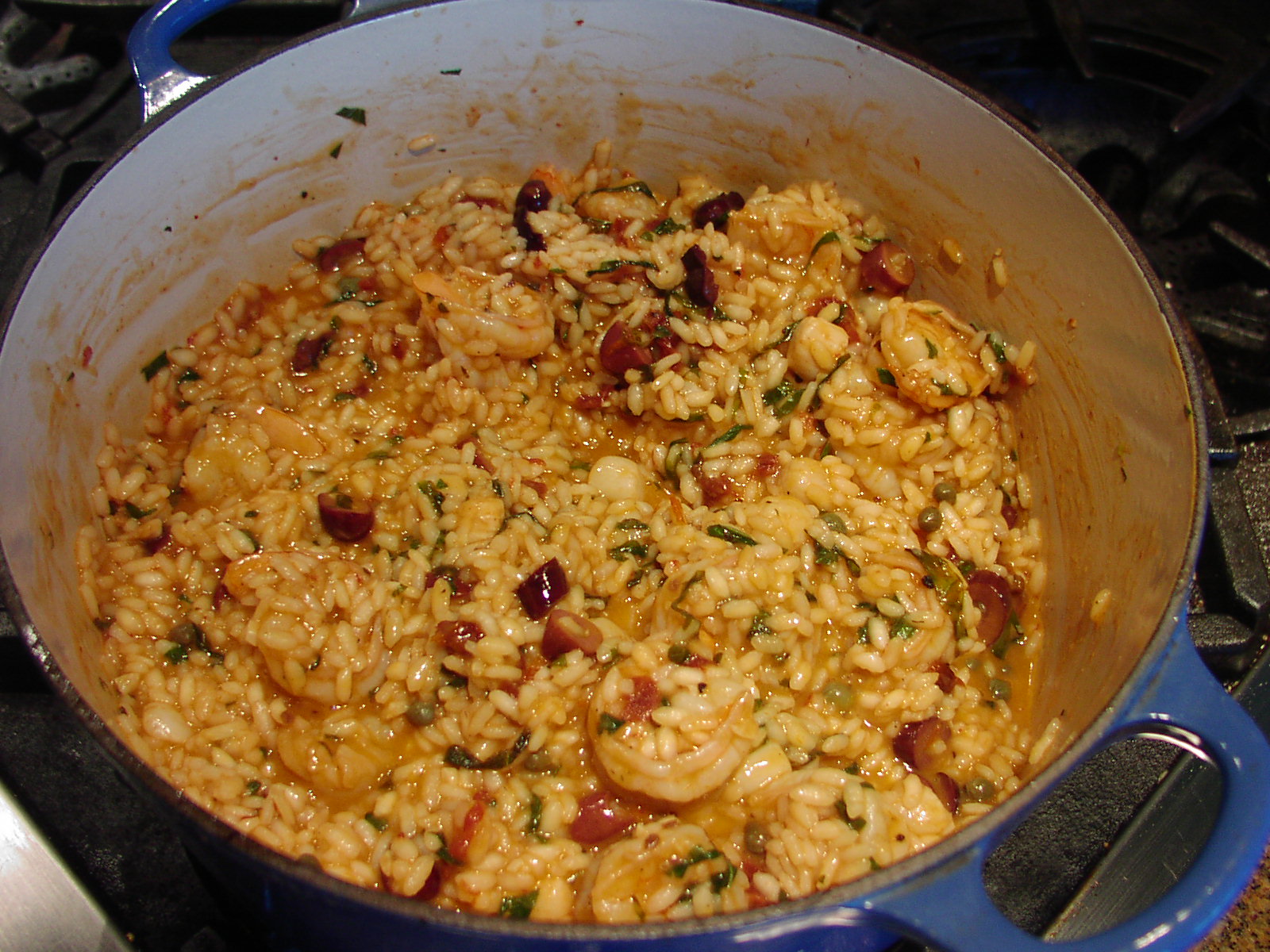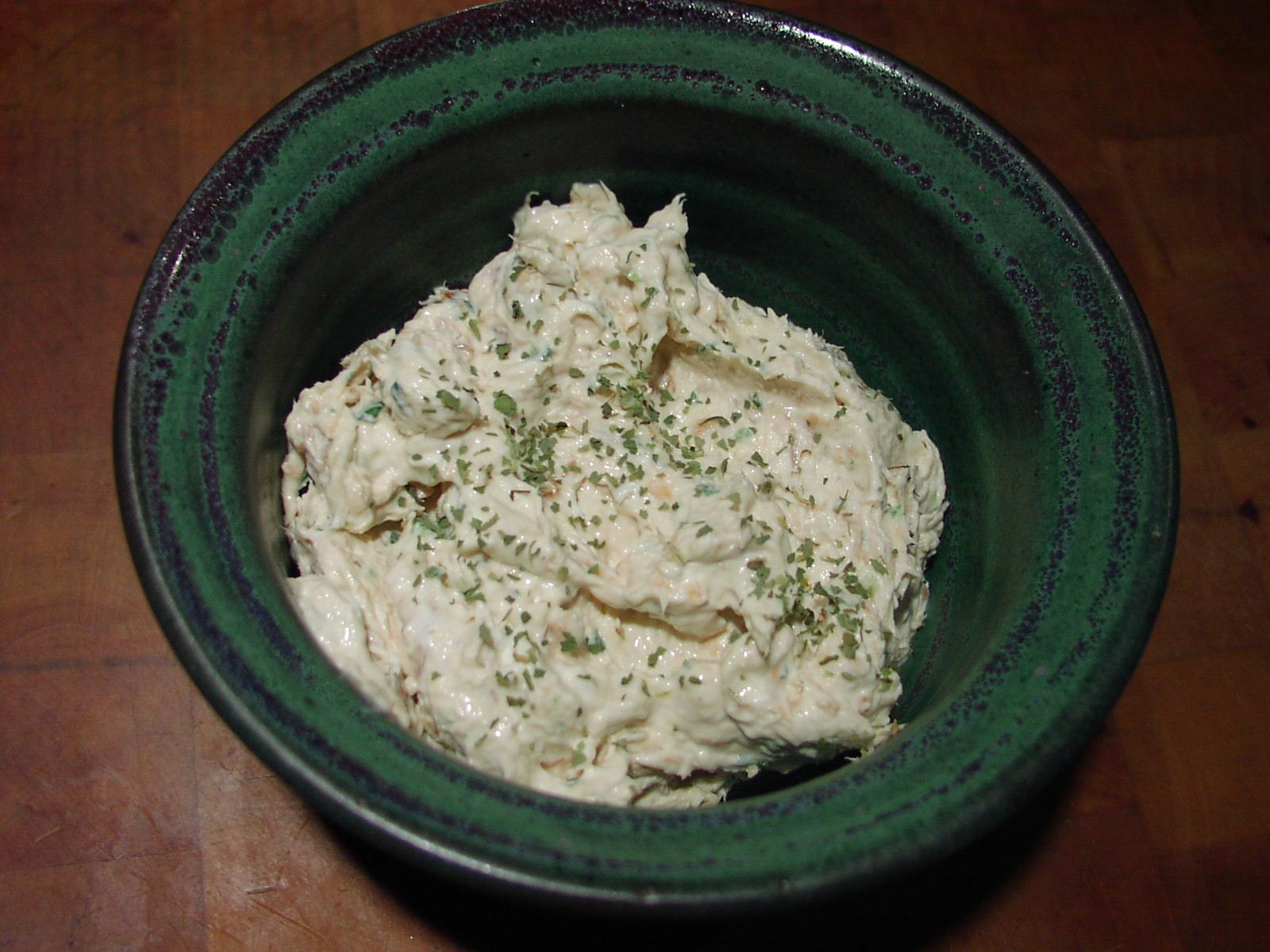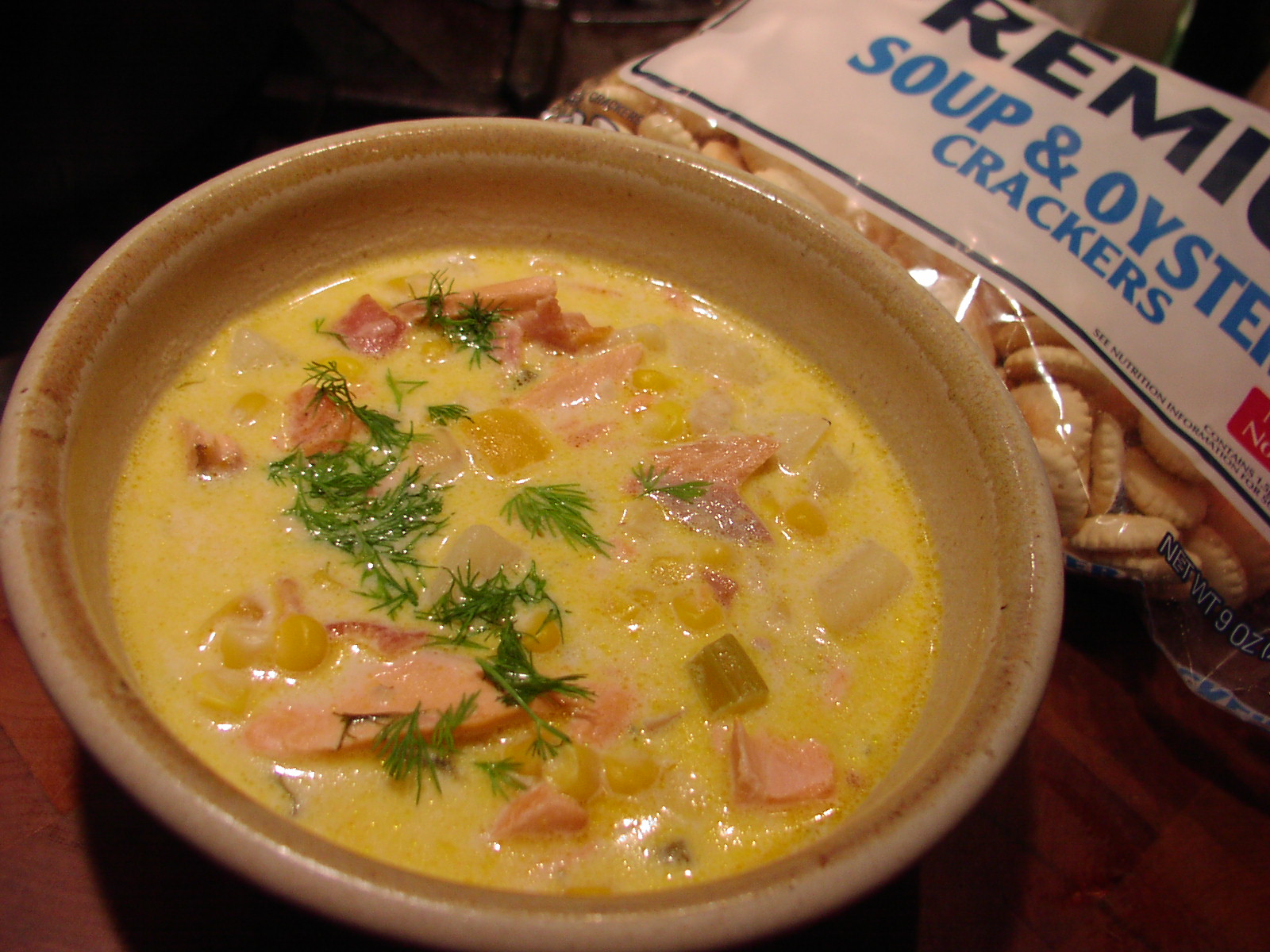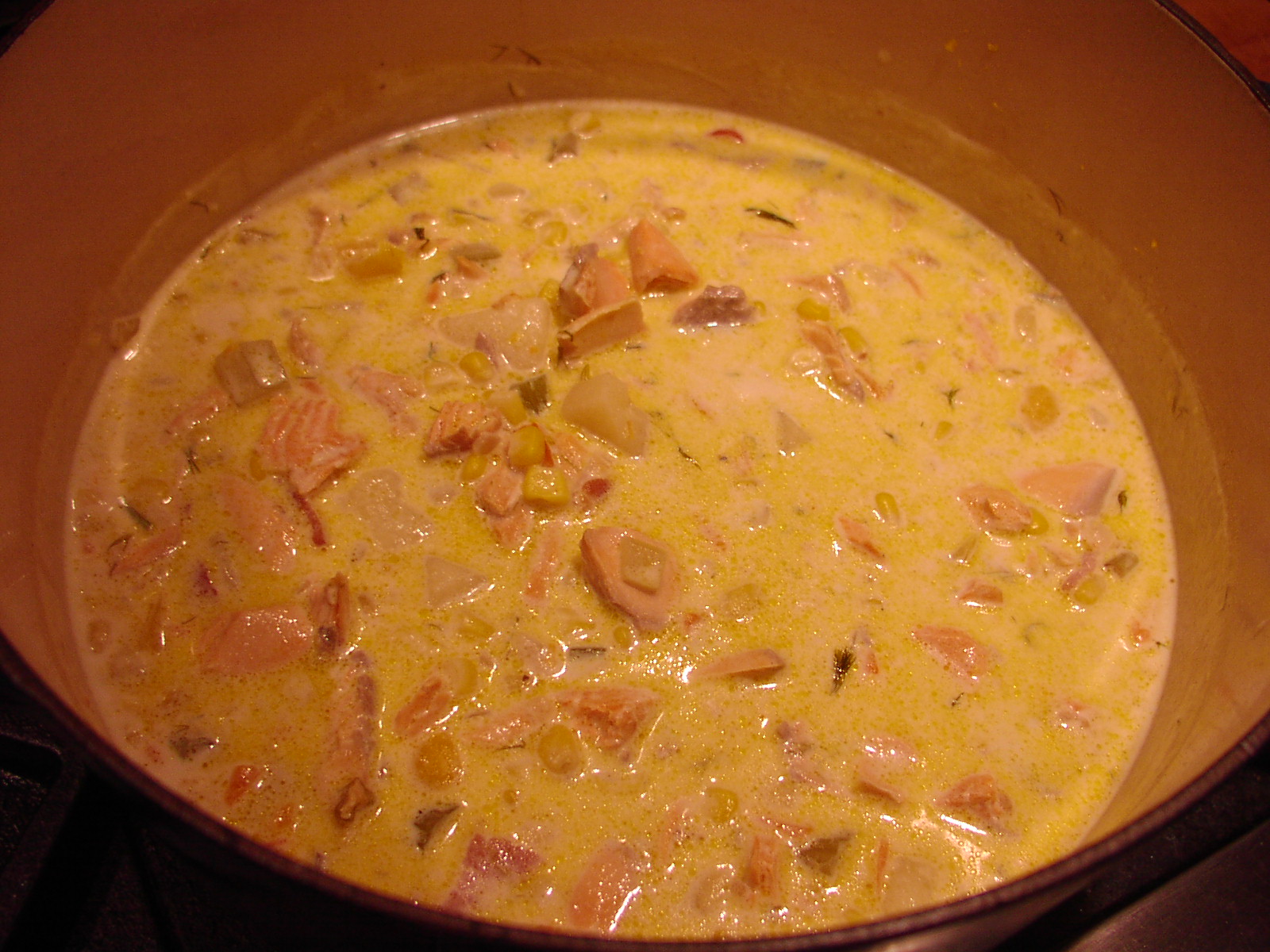The other evening I had just an overwhelming hankering for Pad Thai. But having never made it before, I had to go to the internet for help. I only knew that whatever else the dish contained, mine had to have bite sized pieces of shrimp, crispy cubes of fried tofu, and of course rice noodles.
One of the first recipes I found was from Jennifer Steinhauer. I added, subtracted, and generally had my way with her recipe, but the basic ingredients she used became the backbone for the recipe you find below.
Jennifer’s recipe, as did almost all the other Pad Thai recipes, called for tamarind paste. Now I live on an island with just one humble grocery store. And granted, our store does its best with the limited space it has, but I didn’t even bother looking for tamarind paste. So I researched substitutions. Apparently equal parts of fresh lime juice and brown sugar is close enough for practical purposes. (And in my case, practical purposes includes not having to drive all over the region looking for tamarind paste!)
So there is no tamarind paste in my recipe. And as far as my taste buds can tell, the basic flavor of a good Pad Thai sauce has not been jeopardized by the absence of this quintessential Pad Thai ingredient. (Plus from everything I read about tamarind paste, it’s a pain in the patootie to work with! And frankly, I no longer have the time or patience for high maintenance ingredients!)
So if you too love Pad Thai and would like to serve it at home, give this recipe a try. It has lots of wonderful flavor without being too loaded with fat or salt. And it’s a one dish meal. And if there’s any phrase I’m beginning to like more and more, it’s “one dish meal”. Of course in my case, that one dish should be a big old salad, not a plate of noodles. But one simply must listen to one’s own hankering every so often. How else are we to keep our souls alive if we neglect our bodies wishes all the time? Perhaps I should research that subject on the internet. (I’ll let you know if I find an answer that still allows me to eat Pad Thai once in a while!)
- 8 oz. stir-fry rice stick noodles (the noodles are almost fettuccine-width)
- ½ block firm tofu
- 2 T. cornstarch, or more as needed
- 1 T. sesame oil
- 1 tsp. chili oil
- 2 T. fish sauce
- 1 T. granulated sugar
- 1 T. brown sugar
- 2 T. fresh lime juice
- pinch crushed red pepper flakes
- ¼ c. water
- 2 T. canola oil
- 2 small garlic cloves, finely minced
- 2 tsp. minced ginger
- ½ small carrot, grated
- 1/3 c. finely chopped red bell pepper, opt.
- 2 c. chopped baby spinach or shredded Napa cabbage
- ¾ – 1 lb. uncooked large (16-20) shrimp, peeled, deveined, and cut into thirds
- 2 lg. eggs
- 4 green onions, thinly sliced
- 1-2 c. bean sprouts
- 1/3 c. chopped salted peanuts
- 2 T. sesame seeds, opt.
- 1 lime, cut into wedges
Bring 6 cups of water to a boil in a medium saucepan. Remove from heat. Add the rice noodles; let stand for 8 minutes or until the noodles are soft but firm. (Basically al dente.) Rinse under cold water; drain well. Set aside.
Meanwhile, cut drained tofu into 1/4-inch slices and coat with cornstarch. Combine the sesame oil and chili oil in a medium frying pan. Bring oil to medium heat and fry the tofu until both sides are a nice golden brown. Remove from pan and drain on a paper towel. When cool cut into bite size pieces. Set aside.
In a small bowl, whisk together the fish sauce, granulated sugar, brown sugar, lime juice, crushed red pepper flakes, and water; set aside.
Set a wok or large fry pan over high heat for 1 minute, then add the canola oil and heat until the oil shimmers. Add the garlic, ginger, carrot, red bell pepper, and spinach; sauté for 30 seconds. Add the shrimp and sauté until almost cooked through, 1-2 minutes. Transfer to a plate.
Add the noodles to the pan and stir-fry for 1 minute. Pour in the fish sauce and toss to coat the noodles. Cook until the noodles are hot, then push them to one side of the wok/pan and scramble the eggs in the remaining space. Add the reserved shrimp mixture, fried tofu chunks, green onions, bean sprouts, and half the peanuts. Toss to mix. Garnish with the remaining peanuts, sesame seeds, and lime wedges. Serve immediately.

